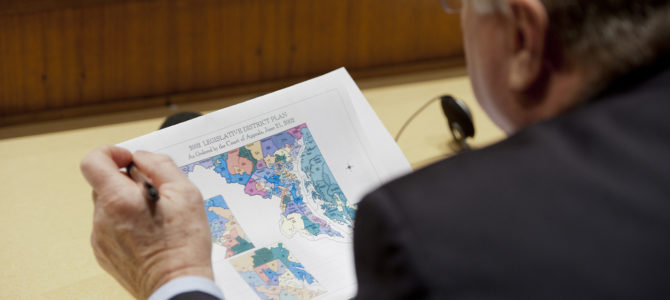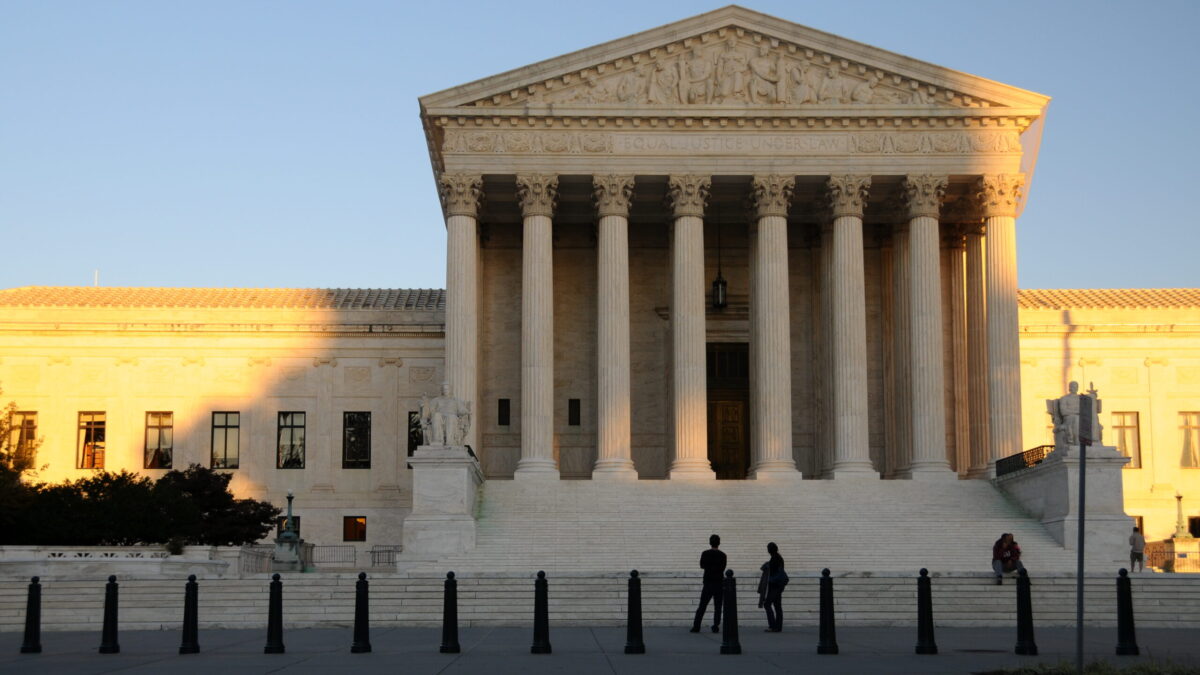
Once upon a time, everyone knew what gerrymandering was: congressional districts with boundaries that twist and turn in ways that have no connection to geography, for nefarious reasons, either to advantage a political party or to advantage incumbents of both parties, or to advantage or disadvantage minorities of either party.
There’s a certain “I know it when I see it” from looking at these maps, such as Maryland’s 3rd District, an odd, three-spoked contraption (as profiled on CNN); or the C-shaped 4th District in Illinois, designed to capture two Hispanic parts of Chicago and create a more-or-less officially designated “Hispanic Representative” in response to a court order.
Anti-gerrymandering reform has consequently centered on setting requirements that districts be compact, and represent, as far as possible, particular communities, so that you’re more likely to have a representative who lives near you and knows about your issues, rather than one who lives tens or hundreds of miles away and represents bits and pieces of different communities.
But there’s a new way that reformers are talking about gerrymandering and advocating for changes in redistricting, and that’s the concept of the “efficiency gap.” This is a concept developed by Eric McGhee of the Public Policy Institute of California and University of Chicago law professor Nick Stephanopoulos. It’s based on the notion that the districting process is fair to the degree each political party ends up with representation in Congress or the state legislature that is roughly proportional to the total votes the candidates from each party garnered.
This “efficiency gap” concept got a fair amount of publicity in 2015. A Wonkblog article, for example, demonstrated with a blue and red grid that districts could be set up compactly yet still disadvantage one political party or another. Therefore, “anti-efficiency gap” activists argue, it’s not enough to simply draw politics-blind districts, but instead, one must draw them with an eye toward ensuring that the majority party, in terms of overall votes, is able to “efficiently” translate those votes into seats.
As reported Dec. 2 in The Washington Post, Missouri, after a voter initiative, is the first to implement a system based on this ideal.
Missouri will be the first to rely on a new mathematical formula to try to engineer ‘partisan fairness’ and ‘competitiveness’ in its state legislative districts. …
An Associated Press analysis of the new Missouri formula shows it has the potential to end the Republicans’ supermajorities in the state House and state Senate and move the chambers closer to the more even partisan division that is often reflected in statewide races. But the size of the likely Democratic gains remains uncertain, partly because the formula has never been put to a test.
The constitutional amendment approved by Missouri voters in November keeps those criteria. But it also requires a new nonpartisan state demographer to base state House and Senate districts on the votes cast in the previous three elections for president, governor and U.S. senator — races that are decided by voters statewide and are not affected by gerrymandering.
But this isn’t really a fix for gerrymandering as it’s been traditionally defined. Like many states, Missouri’s urban centers of St. Louis and Kansas City have high concentrations of Democratic voters, while the rural areas are overwhelmingly Republican. That results in a lot of lopsided state legislative races, even though statewide races are often highly competitive.
By requiring legislative districts to be based on the votes for top statewide races, Democrats are likely to gain influence. The new redistricting formula takes into account nine statewide elections from 2012 to 2020. In the seven that have already been held, Republicans received 51 percent of the vote to Democrats’ 49 percent.
To achieve partisan fairness, the new legislative maps would have to be drawn so Democrats would be projected to win about 48 percent of the seats. That means some urban Democratic voters likely would have to be mixed together with rural Republican voters in elongated districts that could look more gerrymandered than the current ones.
The reality is that this isn’t really anti-gerrymandering reform. It’s an effort to use the district-based structure of American elections and legislatures as a means of effectively creating a proportional-representation system — but, worse, trying to lock in past electoral outcomes for future votes.
It’s not fair to voters to re-gerrymander them in another fashion, in which they are either lucky or unlucky in whether the district is one that’s designated for the candidate of their preferred party or not. Also, it further abandons the idea that voters should have a real choice, and that their representative is out to represent them, not their political party.
If a state wants a proportional representation system, then the appropriate solution is to create a proportional representation system, either by wholly discarding the concept of “districts” (especially for House elections) or by taking the German approach of first allocating representation based on winners of district-based elections, then adding in the necessary number of additional party-selected representatives to get to the desired proportion. Yes, it would require that a state amend its constitution, but there’s no reason that couldn’t be done, and it would be far more honest than playing games with “efficiency” formulas.
Of course, for voters to cast their ballots for particular parties rather than particular candidates would transform politics in other ways. Would political parties cater to their bases, or promote an image of moderation to capture independent voters? Heck, perhaps at the local level minor parties would hive off the more socialist-leaning parts of the Democratic Party, or the Tea Party parts of the GOP, and aim at competing for the extra allocated representatives based on their representation, making each of the major parties, in turn, more moderate.
It would be a dramatic change. But it would be far more honest than trying to replicate this outcome by gerrymandering.








